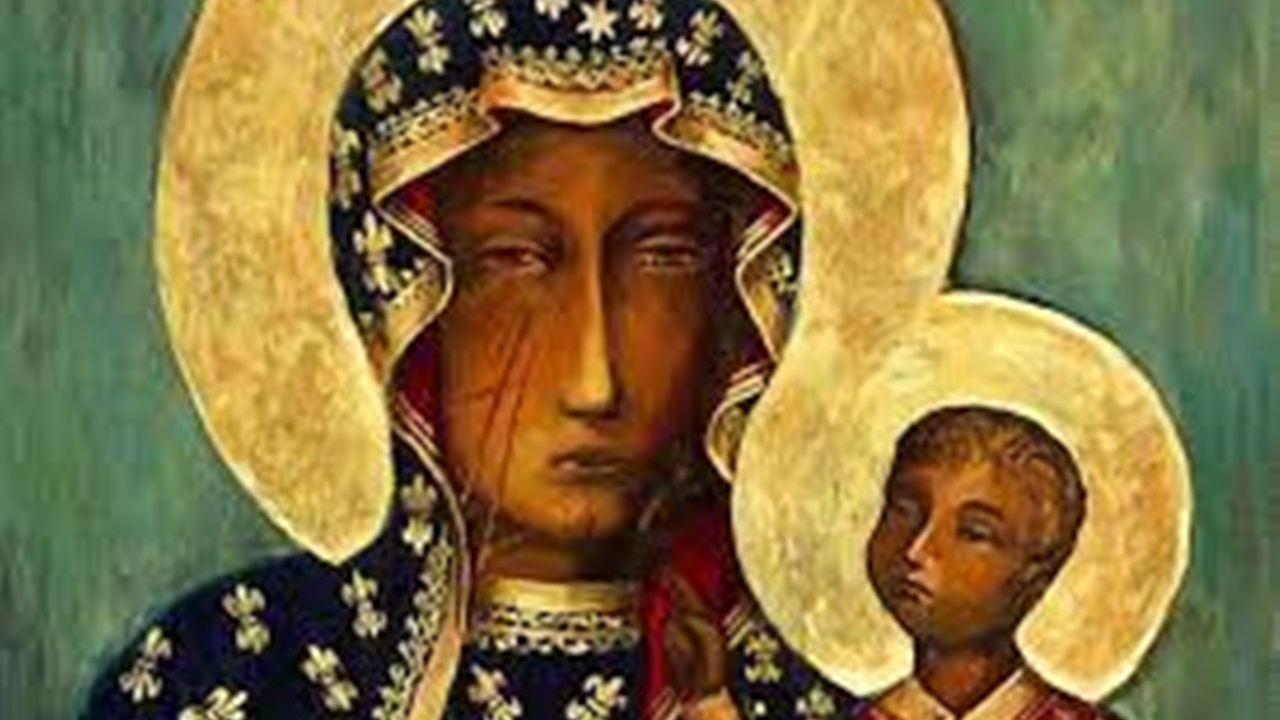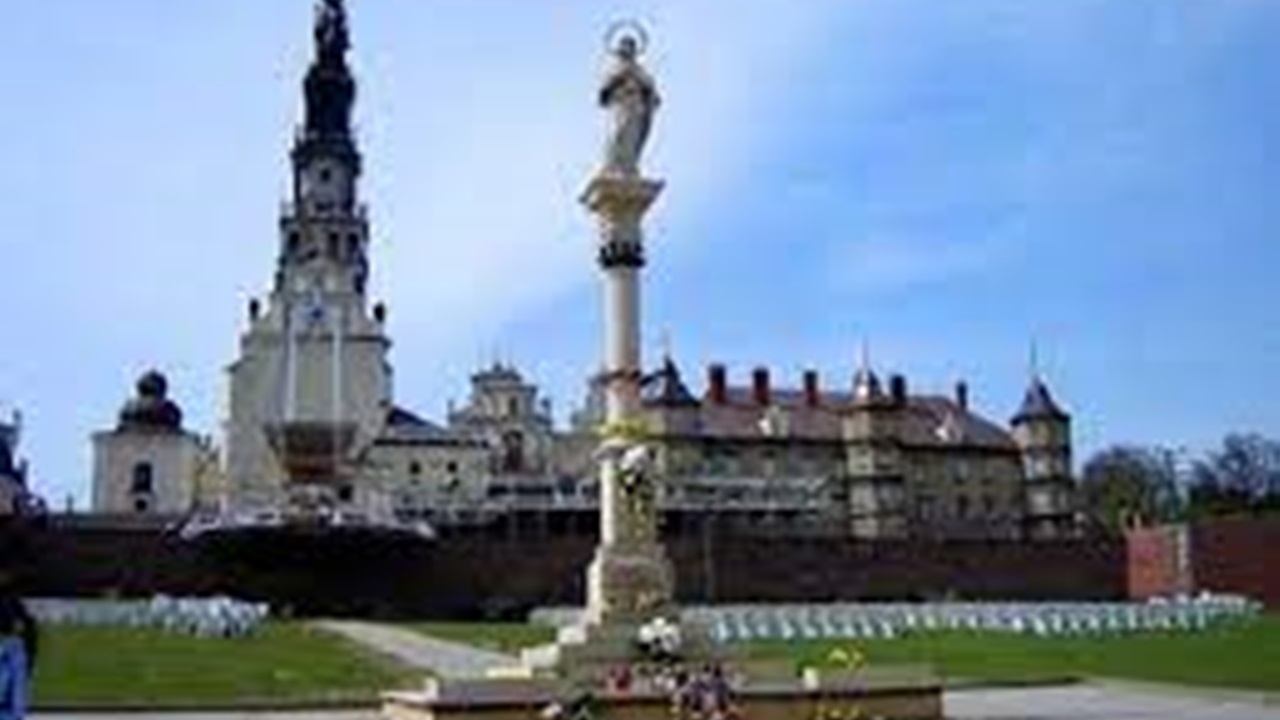The painting of the Black Virgin of Czestochowa attributed to St. Luke the Evangelist
La Black Virgin of Czestochowa it is one of the most important Marian shrines in Poland. Legend has it that it is a panel painted by Saint Luke himself, the evangelist, during the life of Jesus. It is a sacred image, in which the Virgin is represented with the Child Jesus in her arms, seated on a throne gilt, surrounded by a glory of angels.

The Black Virgin has become one of symbols most important of the Catholic religion in Poland. Its exact origin has never been fully clarified, but it is known that a Greek monk would have brought it to Czestochowa in 1382. Over the centuries, the icon has experienced moments of great popularity, but also of disappearance and theft.
The Polish painter Jozef Tadeusz Szczepanski was commissioned to restore the panel in 1430, but instead decided to cover all the engraved and damaged parts with a black coatsignificantly reducing the original surface. On the occasion of the restorations carried out in the 1966, it was decided to remove the black coat and the damaged parts of the original painting were revealed.
Today, the table is kept in the sanctuary of Jasna Gora, near the city of Częstochowa, and is the destination of numerous visits by the faithful.

The sanctuary of Czestochowa
Il sanctuary of Czestochowa is a place of great historical, religious and cultural importance located in the city of Czestochowa, Poland. Also known as the shrine of the Black Madonna is a Marian shrine dedicated to the Virgin Mary, who is venerated as the Queen of Poland.
The sanctuary of Czestochowa is one of the most important in the world and every year it attracts thousands of pilgrims from all over the world. People come here to pray, ask for the protection of the Virgin Mary and to participate in celebrations and masses.
The pilgrimage to takes place every year in the summer months foot towards the sanctuary. The longest path to reach it measures 600 km and was traveled in 1936 also by Carol Wojtyla and later by Papto John Paul II.